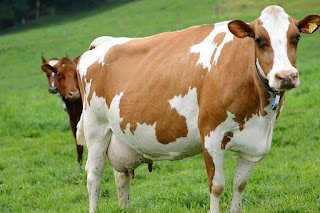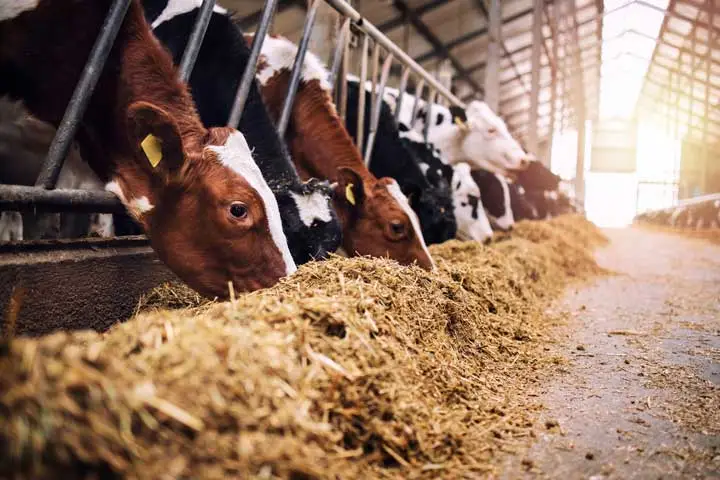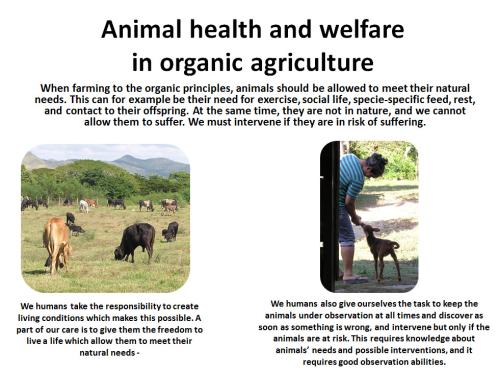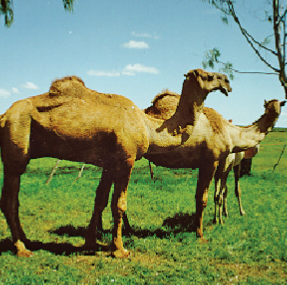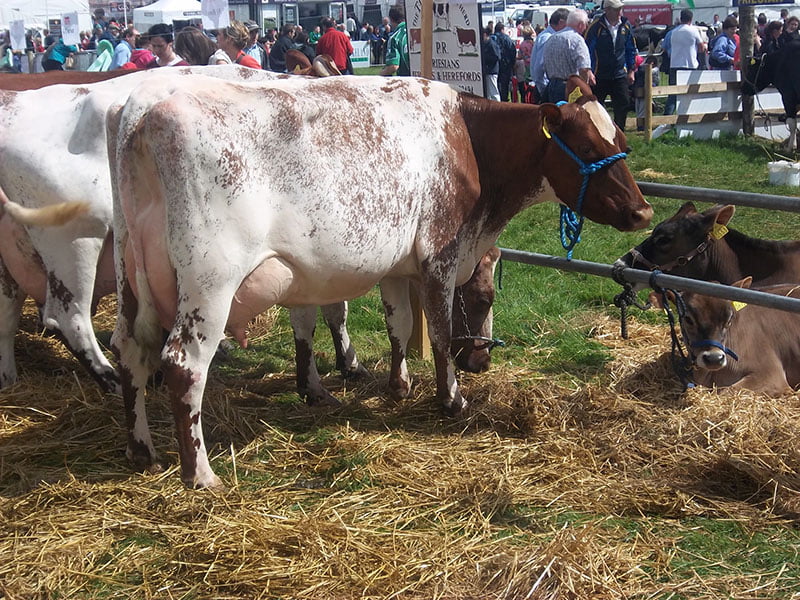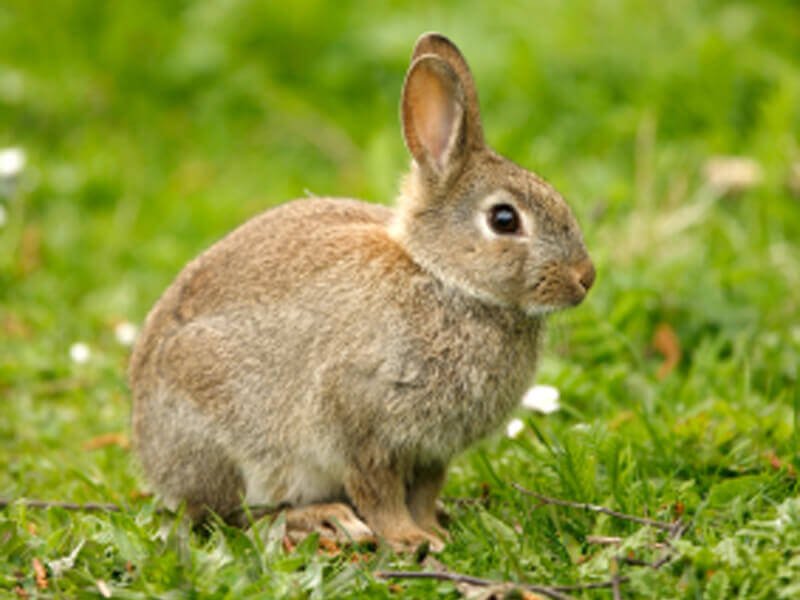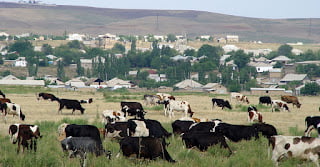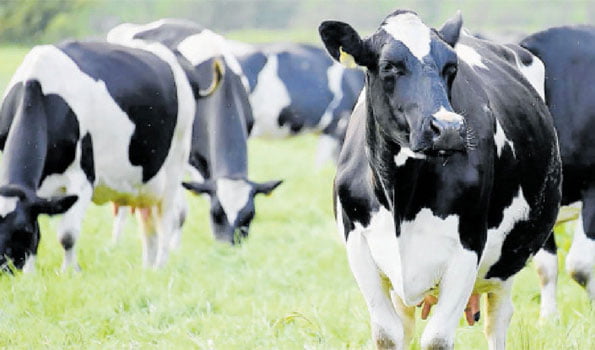How long does it take for a cow’s udder to dry up?The average gestation period of cows varies from 275 to 283 days. To determine the drying-up date, subtract 60 days from the expected calving date. If you stop milking a cow, it will dry up. A cow with a high milk production of 20kg or more must be milked once a day during the last two to three days before drying up Mastitis is inflammation and infection of the udder. This is primarily a problem in dairy cows but can also occur in beef cows. Depending upon the infectious organism…
Category: Management
Poultry Feed formulation (new) I Mshindo media
HOW TO FORMULATE YOUR OWN CHICKEN FEEDThe common ingredients are whole maize, maize germ, cotton seed cake, soya beans, sunflower or fish meal (Omena).In addition, farmers need to add several feed additives (micronutrients, minerals and vitamins) to make ensure their chicken have a balanced feed that meets their daily nutrient requirements. Material is available cheaply, especially after the harvesting season. Depending on the cost of raw material, farmers who make their own feeds at home save between 30 to 50 per cent for every 70kg bag of chicken feed, depending…
Animal nutrition and feed rations
Introduction Animal nutrition entails the study of the composition and characteristics of the material consumed by the animal, the manner in which this material is metabolised (converted, utilised, and excreted) in the digestive tract and body cells of monogastric animals (pigs, broilers, layers), ruminants (sheep, cattle, goats), … Livestock keeping in all its ventures is a major source of incomes all over Kenya, from the most productive to nearly desert areas, and for all livestock keepers livestock feeding and nutrition is a major concern. Inadequate nutrition is a major cause of low…
What things to consider when choosing to keep animals
Introduction Emphasis on integration Organic livestock husbandry is based on the harmonious relationship between land, plants and livestock, respect for the physiological and behavioral needs of livestock and the feeding of good-quality organically grown feedstuffs. (IFOAMs Norms for Organic Production (2012); General Principle for Animal Management, p. 42) Integration of animals into crop producing farms is fundamental for many types of organic farms. In temperate and arid zones, animal husbandry plays an important role in the recycling of nutrients, while it is often less emphasized in the humid tropics. The caring, training, and…
Sheep | Definition,Characteristics, Breeds & Facts
Introduction Origin and history of sheep The domestic sheep (Ovis aries) ruminant mammal typically kept as livestock refers to selective grazing animals that may be domesticated (tamed) or wild. At one time all wild. Around 10,000 BC sheep were domesticated by humans. Most of the wool breeds of sheep were developed from Moulfan sheep . Most of the hair breeds are similar to the Urial sheep of ancient times. Prior to domesticating sheep, only the dog and reindeer were domesticated. As the animals were raised under tamed conditions, they went through several changes. On…
Camel Definition & Meaning | Description, Types& Adaptations
Introduction Scientific name: Camelus dromedarius Order/Family: Camelidae A camel (from Latin: camelus)is an even-toed ungulate in the genus Camelus that bears distinctive fatty deposits known as “humps” on its back. Camels have long been domesticated and, as livestock, they provide food (milk and meat) and textiles (fiber and felt from hair). Understand camels Camels come from the most barren and harsh places on our planet. Everything in the camel is designed to trap or save moisture; even their blood cells are different in order to deal with less water. They need more salt than most animals. They are not considered ‘real ruminants’, but…
Mange in Dogs,Meaning, Treatment and Prevention
Mange is a skin disease that affects mammals caused by microscopic mites that burrow into skin Mange, skin disease of animals caused by mite infestations, characterized by inflammation, itching, thickening of the skin, and hair loss. The most severe form of mange is caused by varieties of the mite Sarcoptes scabiei, which also causes human scabies. Some form of mange is known in all domestic animals, although many varieties of mange mites infest only one species. They are transmitted between animals by direct contact and by objects that have been in contact with infested animals. Most forms of mange are treatable…
Milk fever in cows – Causes,symptoms&Control/prevent
Milk fever in cows Milk fever (hypocalcaemia) as a nutritional disorder defined as a metabolic disorder due to insufficient calcium, commonly occurring during calving,this happens when the dairy cow has lowered levels of blood calcium. • This disease occurs shortly after the cow gives birth (< 72 hrs). • The word “MILK FEVER” has nothing to do with the cause of the disease itself. • The cause of the problem is the lack of Calcium minerals in the body of the mother cow – HYPOCALCAEMIA OTHER SYMPTOMS ARE:- – Stop…
Rabbit Farming, Rearing,Production and Management
RABBIT FARMING A PROFITABLE BUSINESS : Rabbit farming is not a new enterprise in the World despite misconception by many as a non-income generating activity. However, in recent years many farmers have started to realize its potentiality as a profitable investment ADVANTAGES OF RABBIT FARMING Their feed requirement is low, especially with regard to demand for grain. Their housing and disease control managements are also low yet their meat is highly nutritious and healthier source of protein when compared with other sources of meat. Rabbits are not rodents, they are…
Common Cattle diseases I Signs,Prevention and their management
COMMON CATTLE DISEASES Cattle suffer from a variety of diseases. Diseases are more common among herds kept in tight quarters, such as on feedlots, or large herds kept on too few acres. Diseases are also more common among stressed animals, such as calves weaned and shipped immediately to new locations. Keeping new animals quarantined until you’re sure they aren’t suffering from disease is a simple herd management practice that can keep the majority of your livestock healthy by reducing the number of potentially transmitted diseases. Beef cattle diseases fall into…
Dairy Cow Farming -About dairy cows Housing and Characteristics
Cows are livestock that are highly trusted by the majority of citizens in this country. Dairy cattle (also called dairy cows) are cattle bred for the ability to produce large quantities of milk, from which dairy products are made. There are three types of cattle raised in this country which are modern cattle, local cattle, and wild cattle. The following are the benefits of cattle breeding Food such as milk and meat Fertilizer Leather that is used as raw material to make shoes, belts, bags, clothes and beds Earning money is also…
RABBIT FARMING, TYPES AND DISEASES
In the previous article we talked about how to prepare hutches and different diets for rabbits, in this article we will talk about different types and diseases of rabbits, continue… RABBIT BREEDS: There are more than 45 species of rabbits worldwide. The most popular species known in East Africa are the following: 1. NEW ZEALAND WHITE : These rabbits are white and the eye color is dark brown (pink) close to red. Puberty early (six months), gives birth seven or more children and can breastfeed them well. Their meat is…
Best breed of dairy cows I Mshindo Media
Milk production is a very good and interesting business that has many benefits and makes the farmer satisfied especially for the one who likes this work. However, it is necessary to start by laying a solid foundation even before thinking about which type you will take for breeding. It is good to know that management is one of the most important things that if neglected can even change a dairy cow to have poor production like a local cow. Different types of dairy cows have different needs, so the level…
How can you control disease in broiler chicken I Mshindo Media
Prevention and Control of disease in broiler chicken In poultry industry primarily emphasis is given more on prevention and control than curative measures. A suggestive disease prevention & control programme follows: · Start with disease free stock. · V accine chicks against Ranikhet & Merek’s disease at Hatchery . · Use coccidiostal to prevent coccidiosis.…
Poultry Farming
Introduction to Animal Husbandry If we talk about agriculture, animal husbandry has its own importance for raising livestock in a scientific way i.e by giving a proper environment to the cattle. In such an environment, cattle remain disease-free and healthy from both inside and out. Animal husbandry is considered important as this process allows us to increase livestock production to cover up the demands of human beings tremendously increasing in population. As due to the increase in population demands of egg, meat, milk is also increasing day by day, so…
Milking Procedures
Consistency in management and proper milking procedures are essential for profitable dairy production. Following correct procedures can lead to increased production along with quicker milk output and quality milk. The following procedures are suggested to increase quality and production while decreasing parlor or tie-stall milking times: Clean Teats as necessary ᵃ Completely coat each teat to the base of the udder with an effective teat disinfectant Observe the foremilk by stripping milk into a strip cup (not under the cow). This is known as fore-stripping (may be done before pre-…
Bluetongue
Bluetongue is a non-contagious, viral disease affecting domestic and wild ruminants (primarily sheep and including cattle and goats), that is transmitted by insects, particularly biting midges. The severity of disease varies among different species with symptoms being most severe in sheep resulting in death, weight loss and disruption in wool growth. In highly susceptible sheep, morbidity can be as high as 100%. Mortality averages from 2-30% but can be as high as 70%. Cattle often have a higher infection rate than sheep and demonstration and severity of clinical signs varies…


